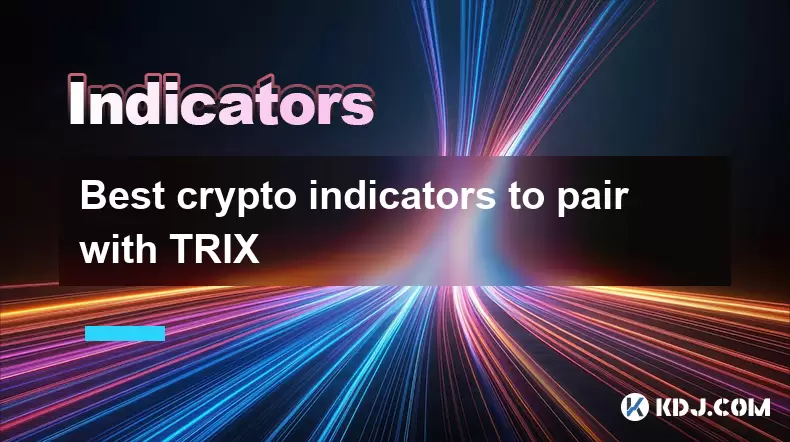-
 Bitcoin
Bitcoin $117,462.8204
-2.03% -
 Ethereum
Ethereum $3,061.1595
1.10% -
 XRP
XRP $2.9139
-2.19% -
 Tether USDt
Tether USDt $1.0002
0.02% -
 BNB
BNB $685.1357
-1.24% -
 Solana
Solana $161.3803
-2.11% -
 USDC
USDC $1.0002
0.04% -
 Dogecoin
Dogecoin $0.1948
-2.92% -
 TRON
TRON $0.2987
-0.89% -
 Cardano
Cardano $0.7330
-1.27% -
 Hyperliquid
Hyperliquid $47.7888
0.13% -
 Stellar
Stellar $0.4514
-2.93% -
 Sui
Sui $4.0169
2.74% -
 Chainlink
Chainlink $15.7088
-2.57% -
 Hedera
Hedera $0.2356
-3.33% -
 Bitcoin Cash
Bitcoin Cash $488.6656
-3.61% -
 Avalanche
Avalanche $21.2955
-1.47% -
 UNUS SED LEO
UNUS SED LEO $9.0415
0.42% -
 Shiba Inu
Shiba Inu $0.0...01332
-0.82% -
 Toncoin
Toncoin $3.0124
-0.62% -
 Litecoin
Litecoin $94.2175
-2.07% -
 Polkadot
Polkadot $4.0011
-0.61% -
 Monero
Monero $333.5714
-3.46% -
 Uniswap
Uniswap $9.1114
-1.56% -
 Dai
Dai $1.0000
0.02% -
 Ethena USDe
Ethena USDe $1.0005
0.00% -
 Bitget Token
Bitget Token $4.4951
1.87% -
 Pepe
Pepe $0.0...01242
0.47% -
 Aave
Aave $321.9943
0.51% -
 Bittensor
Bittensor $434.1984
5.13%
Best crypto indicators to pair with TRIX
TRIX, a momentum oscillator, helps cryptocurrency traders spot trend reversals by smoothing price data, but works best when combined with tools like MACD, RSI, or volume indicators to confirm signals and reduce false positives in volatile markets.
Jul 15, 2025 at 10:00 am

Understanding TRIX and Its Role in Cryptocurrency Trading
TRIX, or Triple Exponential Average, is a momentum oscillator primarily used to identify oversold or overbought conditions in the market. It smooths price data by applying triple exponential moving averages and then calculates the percentage change between those smoothed values. In cryptocurrency trading, where volatility is high and trends can reverse quickly, TRIX helps traders filter out noise and spot genuine trend reversals.
However, like many technical indicators, TRIX works best when paired with complementary tools that enhance its signals and reduce false positives. Given the fast-moving nature of crypto markets, combining TRIX with other reliable indicators can significantly improve decision-making and trade accuracy.
Why You Should Use Additional Indicators with TRIX
While TRIX provides valuable insights into momentum and trend strength, it may lag during sudden price spikes or sharp corrections. This delay occurs because TRIX relies on multiple layers of smoothing, which can cause it to react slower than real-time price movements. Therefore, pairing it with indicators that offer faster responses or confirmatory signals becomes essential.
Moreover, TRIX alone cannot determine support and resistance levels, nor does it provide clear entry or exit points without additional context. By integrating it with volume indicators, oscillators, or trend-following tools, traders can better validate TRIX-generated signals and avoid misleading ones.
Pairing TRIX with the MACD for Confirmation Signals
One of the most effective combinations in cryptocurrency trading involves using TRIX alongside the Moving Average Convergence Divergence (MACD). Both are momentum-based indicators, but they operate differently — MACD compares two exponential moving averages, while TRIX applies triple smoothing before calculating momentum.
- Look for convergence between TRIX and MACD crossovers to confirm strong trend changes.
- When both indicators generate bullish signals simultaneously, such as crossing above their signal lines, it strengthens the case for entering long positions.
- Conversely, bearish divergences in both tools can warn of potential downturns.
This dual confirmation reduces the likelihood of acting on false breakouts or temporary volatility spikes, especially in highly liquid cryptocurrencies like Bitcoin and Ethereum.
Combining TRIX with Volume-Based Indicators
Volume plays a crucial role in validating any technical signal, particularly in cryptocurrency markets where pump-and-dump schemes are common. Pairing TRIX with On-Balance Volume (OBV) or Volume Weighted Average Price (VWAP) can help distinguish real momentum from artificial price manipulation.
- If TRIX shows a positive divergence but OBV remains flat or declines, it might indicate weak buying pressure despite rising prices.
- A surge in VWAP coinciding with a TRIX crossover suggests institutional or large-volume participation, increasing the reliability of the signal.
- Watch for volume spikes without corresponding TRIX movement, which could hint at wash trading or spoofing tactics.
These combinations allow traders to filter out deceptive moves and focus on trades supported by genuine market interest.
Using RSI or Stochastic Oscillator to Identify Overbought/Oversold Conditions
Since TRIX excels at identifying trend direction and momentum shifts, it lacks the ability to measure overbought or oversold levels effectively. That’s where oscillators like Relative Strength Index (RSI) or Stochastic Oscillator come into play.
- When TRIX indicates a strong uptrend but RSI crosses above 70, it may signal an overextended rally and a possible pullback.
- Similarly, if TRIX is trending downward and Stochastic falls below 20, it confirms oversold conditions and potential bounce opportunities.
- These pairings help traders time entries and exits more precisely, especially during consolidation phases or after major news events.
Using these oscillators in tandem with TRIX ensures traders don’t chase momentum blindly and instead enter trades with better risk-reward ratios.
Leveraging Bollinger Bands or Support/Resistance Levels with TRIX
To further refine trade setups, combining TRIX with Bollinger Bands or static support/resistance levels adds another layer of context. These tools help define price boundaries and assess whether a breakout or reversal is likely.
- If TRIX generates a buy signal near a key support level, and the price touches the lower Bollinger Band, it increases the probability of a bounce.
- Conversely, if TRIX turns bearish as price hits upper Bollinger Band resistance, it reinforces a potential shorting opportunity.
- Traders should also mark historical price zones where previous rallies or crashes occurred, and cross-reference them with TRIX signals for stronger validation.
These integrations enable traders to make decisions based not only on momentum but also on structural price behavior.
Frequently Asked Questions
Q: Can I use TRIX effectively on smaller timeframes like 15-minute or 1-hour charts?
Yes, TRIX can be applied on shorter timeframes, but it tends to produce more false signals due to increased market noise. To counter this, always combine it with volume indicators and use higher timeframe analysis for context.
Q: Is TRIX suitable for all types of cryptocurrencies, including altcoins?
TRIX works well across various assets, but its effectiveness depends on the liquidity and volatility of the specific cryptocurrency. For low-volume altcoins, TRIX may lag more, so additional filters like VWAP or OBV become even more important.
Q: How do I adjust TRIX settings for different market conditions?
The default setting for TRIX is usually 14 periods, but you can shorten it to 9 or 10 for faster responses in highly volatile markets. Conversely, extending it to 20 or more can help filter out noise in sideways or less active markets.
Q: Can TRIX be used for scalping strategies in crypto trading?
TRIX can be part of a scalping strategy but must be paired with fast-reacting tools like the Stochastic RSI or volume tickers. Due to its smoothing mechanism, relying solely on TRIX for scalping is not recommended without strong confirmation sources.
Disclaimer:info@kdj.com
The information provided is not trading advice. kdj.com does not assume any responsibility for any investments made based on the information provided in this article. Cryptocurrencies are highly volatile and it is highly recommended that you invest with caution after thorough research!
If you believe that the content used on this website infringes your copyright, please contact us immediately (info@kdj.com) and we will delete it promptly.
- Bitcoin, Altcoins, and DeFi: Navigating the Evolving Crypto Landscape
- 2025-07-16 05:30:12
- DeFi Demystified: Navigating the Wild West of Decentralized Finance
- 2025-07-16 04:50:12
- JPMorgan, Stablecoins, and Dimon: A Love-Hate Story?
- 2025-07-16 04:55:12
- Bitcoin's ATH Surge: Exchange Inflows and What They Mean for You, Ya Know?
- 2025-07-16 04:30:12
- PUMP Token Mania on Hyperliquid: Unit Tokenization Takes Center Stage
- 2025-07-16 05:35:12
- Altcoins Awakening: Ethereum's Surge and Bitcoin Dominance Shift
- 2025-07-16 05:50:12
Related knowledge

Advanced RSI strategies for crypto
Jul 13,2025 at 11:01am
Understanding the Basics of RSI in Cryptocurrency TradingThe Relative Strength Index (RSI) is a momentum oscillator used to measure the speed and chan...

Crypto RSI for day trading
Jul 12,2025 at 11:14am
Understanding RSI in the Context of Cryptocurrency TradingThe Relative Strength Index (RSI) is a momentum oscillator used to measure the speed and cha...

Crypto RSI for scalping
Jul 12,2025 at 11:00pm
Understanding RSI in the Context of Crypto TradingThe Relative Strength Index (RSI) is a momentum oscillator widely used by traders to measure the spe...

What does an RSI of 30 mean in crypto
Jul 15,2025 at 07:07pm
Understanding RSI in Cryptocurrency TradingRelative Strength Index (RSI) is a momentum oscillator widely used in cryptocurrency trading to measure the...

What does an RSI of 70 mean in crypto
Jul 13,2025 at 06:07pm
Understanding the RSI Indicator in Cryptocurrency TradingThe Relative Strength Index (RSI) is a widely used technical analysis tool that helps traders...

How to avoid RSI false signals in crypto
Jul 13,2025 at 06:21pm
Understanding RSI and Its Role in Crypto TradingThe Relative Strength Index (RSI) is a momentum oscillator used to measure the speed and change of pri...

Advanced RSI strategies for crypto
Jul 13,2025 at 11:01am
Understanding the Basics of RSI in Cryptocurrency TradingThe Relative Strength Index (RSI) is a momentum oscillator used to measure the speed and chan...

Crypto RSI for day trading
Jul 12,2025 at 11:14am
Understanding RSI in the Context of Cryptocurrency TradingThe Relative Strength Index (RSI) is a momentum oscillator used to measure the speed and cha...

Crypto RSI for scalping
Jul 12,2025 at 11:00pm
Understanding RSI in the Context of Crypto TradingThe Relative Strength Index (RSI) is a momentum oscillator widely used by traders to measure the spe...

What does an RSI of 30 mean in crypto
Jul 15,2025 at 07:07pm
Understanding RSI in Cryptocurrency TradingRelative Strength Index (RSI) is a momentum oscillator widely used in cryptocurrency trading to measure the...

What does an RSI of 70 mean in crypto
Jul 13,2025 at 06:07pm
Understanding the RSI Indicator in Cryptocurrency TradingThe Relative Strength Index (RSI) is a widely used technical analysis tool that helps traders...

How to avoid RSI false signals in crypto
Jul 13,2025 at 06:21pm
Understanding RSI and Its Role in Crypto TradingThe Relative Strength Index (RSI) is a momentum oscillator used to measure the speed and change of pri...
See all articles

























































































